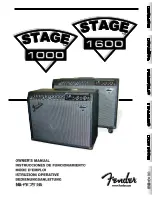
Making Global and Other Important Settings — Function
CVP-210/208
150
Receiving MIDI Data — Receive
MIDI Receive Parts
Setting Root Note Channels — Root
The note ON/OFF messages received at the channel(s) set to “ON” are recognized as the root notes in the
accompaniment section. The root notes will be detected regardless of the accompaniment ON/OFF and split point
settings.
Setting Chord Channels — Chord Detect
The note ON/OFF messages received at the channel(s) set to “ON” are recognized as the chord notes in the
accompaniment section. The chords to be detected depend on the fingering type. The root notes will be detected
regardless of the accompaniment ON/OFF and split point settings. The operation procedure is basically the same as that
of the ROOT display above.
OFF
No MIDI data is received.
SONG
Normally, the part receiving the MIDI data corresponds to the part/voice used in playing back the song data. Channels 1 - 16
correspond to song channels 1 - 16, respectively.
MAIN
The MAIN part is controlled by the MIDI data received on the corresponding channel.
LAYER
The LAYER part is controlled by the MIDI data received on the corresponding channel.
LEFT
The LEFT part is controlled by the MIDI data received on the corresponding channel.
KEYBOARD
MIDI note data received by the Clavinova plays the corresponding notes in the same way as if they are played on the keyboard.
ACMP RHYTHM1-2
The received notes are used as the accompaniment RHYTHM 1 and RHYTHM 2 notes.
ACMP BASS
The received notes are used as the accompaniment BASS notes.
ACMP CHORD1-2
The received notes are used as the accompaniment CHORD 1 and CHORD 2 notes.
ACMP PAD
The received notes are used as the accompaniment PAD notes.
ACMP PHRASE1-2
The received notes are used as the accompaniment PHRASE 1 and PHRASE 2 notes.
EXTRA PART1-5
There are five parts specially reserved for receiving and playing MIDI data. Normally, these parts are not used by the instrument
itself. When these five channels are enabled, you can use the instrument as a 32-channel multi-timbral tone generator.
A
E
D
C
B
1
2
3
4
5
6
7
8
Determines the channel for
changing receive settings.
Determines the Part for the
selected channel. See below for
details about the receive parts.
Turns reception of the
specified data type on or off.
See page 149 for details on
the data types.
The dots corresponding to each
channel (1 - 32) flash briefly
whenever any data is received
on the channel(s).
The MIDI IN/OUT terminals
and Port 1 of the USB termi-
nal correspond to channels 1
- 16. Port 2 of the USB termi-
nal corresponds to channels
17 - 32.
This determines which parts will
receive MIDI data and over which
MIDI channel the data will be
received.
A
E
D
C
B
1
2
3
4
5
6
7
8
Selects the channels in groups of
eight: 1 - 8, 9 - 16, 17 - 24, and 25
- 32, respectively.
Sets the desired channel to ON or OFF.
Sets all channels to OFF.
The MIDI IN/OUT terminals
and Port 1 of the USB termi-
nal correspond to channels 1
- 16. Port 2 of the USB termi-
nal corresponds to channels
17 - 32.
When several channels are
simultaneously set to “ON,”
the root note is detected
from merged MIDI data
received over the channels.
Summary of Contents for Clavinova CVP-208
Page 175: ...MEMO 175 CVP 210 208 MEMO ...
Page 176: ...MEMO CVP 210 208 176 MEMO ...
















































